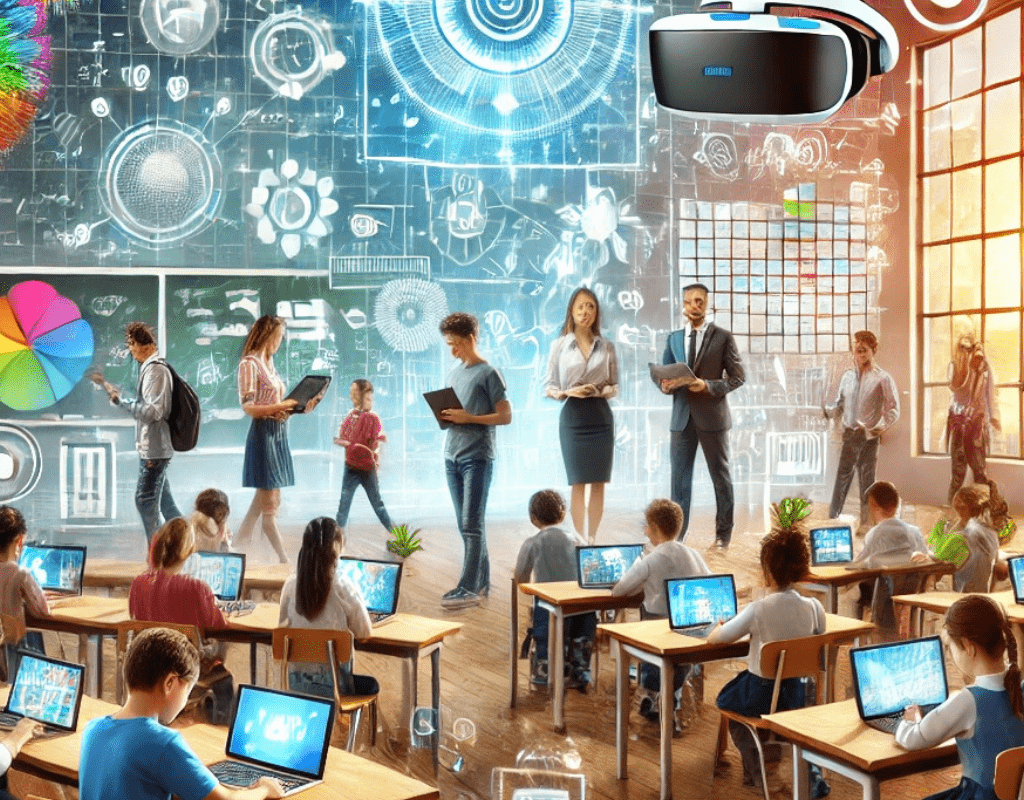Digital Twin Ethics: We are approaching a turning point when our virtual world is progressively entwined with our physical one. Digital twins—virtual copies of real objects—have brought hitherto unheard-of degrees of efficiency and understanding into many fields. From human organs and even whole cities to industrial infrastructure, the possible uses of these digital replicas are enormous and transforming. But while we rush towards the building of these virtual worlds, we should stop and consider the significant moral ramifications of this technical transformation.
The fast spread of digital twins raises important issues of ownership, privacy, and data abuse. As we digitize more facets of our lives, we must ask ourselves how these virtual images affect our perspective of reality and human experience. Thoughtful discussion of these ethical consequences is essential to guaranteeing that we use this technology fairly and sensibly so that everyone benefits from it.
The Growing Value of Digital Twins
From basic simulations to sophisticated, real-time representations driven by IoT sensors, artificial intelligence, and advanced analytics, digital twins have developed Today’s digital twins to forecast behaviors, suggest improvements, and progressively make autonomous judgments impacting our real environment, not just replicas of actual objects.
The market refers to the explosive ascent of this technology, which is predicted to reach over $73 billion by 2030 from $6.9 billion in 2022. From urban planning to healthcare, sectors ranging from digital twins are enthusiastically adopting them, sometimes more than ethical concerns dictate.
The Central Ethical Conundrums of Digital Twin Technology
The emergence of Digital Twin Ethics requires businesses to consider privacy implications before creating virtual replicas of real-world systems. Responsible development frameworks must incorporate Digital Twin Ethics to address concerns about data ownership, consent, and the potential misuse of these sophisticated digital models. Several basic digital twin ethics issues surface when we produce ever more complex digital mirrors of our environment:
1. Representation and Consent
Have the individuals who visit a public location like a city plaza agreed to be represented when we build a digital duplicate of that space? What about digital twins of human organs or biological systems with private medical records?
Take a European city that used a thorough digital twin for urban design. The technology tracked pedestrian movement patterns without express permission, casting doubt on whether people voluntarily engaged in what was basically a perpetual monitoring system passed under the name of innovation.
2. Precision and Effects of Inaccurate Models
No digital doppelganger precisely reflects reality. Sometimes called “digital twin drift,” the discrepancy between the model and reality presents major ethical concerns, particularly when these models guide essential judgments.
A manufacturing business recently turned to a digital twin to forecast safety requirements in a new plant design. Investigating a situation the twin had judged “very unlikely” found that specific human actions hadn’t been sufficiently modeled. An accident happened in that context. This shows how the physical effects of digital twin constraints could be found.
3. Taking Up the Digital Twin Ethics Challenge: Ownership and Responsibility
Dealing with accountability when things go wrong is one of the most annoying features of digital twin ethics. Who is liable when a digital twin independently suggests an activity that results in injury? The creators of it? The developers and the companies putting it into use? What are the algorithms themselves?
This is more difficult in healthcare when digital twins of patients might guide treatment choices. Should a therapy advised by a digital twin have side effects, the line of accountability is hazy at best.
4. Privacy within an Interconnected Twin Ecosystem
Digital twins interact with other systems, building intricate data ecosystems so they are not isolated. For example, a digital doppelganger of a smart house links to security systems, utilities, and even smart city infrastructure.
Beyond the twin’s initial purview, this interconnectedness exposes privacy risks. Data gathered for one use may expose revelations never meant for public knowledge. Energy use data from building twins, for instance, may expose occupancy patterns, job schedules, and lifestyle choices.
5. The Autonomy Challenge: Twin Decision Making
Digital twins increasingly make or suggest judgments automatically when they have more artificial intelligence powers. This raises basic problems concerning human autonomy.
Traffic management twins in smart cities may redirect cars for general efficiency, perhaps negating personal preferences or resulting in unfair effects across different neighborhoods. Where does one draw the line between the problematic limiting of human choice and proper optimization?

Creating Digital Twin Ethics Ethical Framework
Several strategies might assist in creating ethical boundaries as we negotiate these obstacles:
1. openness and explainability Standards
Digital twins shouldn’t operate like black boxes. Companies using twins should be obliged to record and explain how their twins work, what data they gather, under what presumptions they operate on, and what limits they have.
2. Explicit Consent Systems
Ensuring stakeholders are entirely informed about how their data will be used and displayed within digital twins depends on the following of strong consent systems. This is especially important for digital twins that include personal data or mimic human behavior, as these apps may significantly affect people’s rights and privacy.
Open data use communication—that is, what information is gathered, how it will be shown, and the possible ramifications of its use—helps to build confidence between developers and stakeholders. Moreover, getting informed permission helps people make wise judgments about their data, thereby enabling them to choose in or out, depending on their comfort level.
Giving robust consent processes top priority will be essential to maintaining ethical standards and safeguarding the interests of all those engaged as digital twins continue to change and merge into many spheres.
3. Frequent Ethical Exams
Digital twins need ethical care just as they do technological maintenance. Regular audits should check bias, privacy issues, and other abuse situations as the twin develops and interacts with other systems.
Ethical Issues for the Evolution of Digital Twins
Looking forward, the growth of ethical digital twins is likely to have some essential traits that will define their development and implementation.
Future digital twins could have built-in ethical constraints in their operating system. This would prevent certain forms of data collecting and decision-making procedures from happening without suitable control, preserving ethical norms throughout their operation.
The most morally conscious digital twins are probably ones that include human participation in major decision-making procedures. These systems will keep people involved instead of operating independently, especially when choices have significant effects on health, safety, or well-being.
Regulators and others monitoring the activities of a digital twin will need easy-to-use interfaces. These interfaces will help to build responsibility and trust by offering insights into operational parameters, data sources, and decision-making procedures.
Digital twins of the future generation will have to consider cultural variations and social settings. What is considered normal in one context might create moral conundrums in another, emphasizing the necessity of culturally conscious models guiding the use of digital twins in many environments.
By tackling these elements, we can guarantee that the evolution of digital twins conforms to moral standards, fostering creativity while protecting personal rights and society’s values.
Conclusion
Digital twin ethics have amazing advantages in efficiency, sustainability, and creativity. However, these advantages can only be fully realized if we approach twin development with ethical issues first.
We have to make sure our values, not just our technological capacity, reflect our reality as we produce ever-more-advanced digital representations of it. This involves including ethical thought all through the digital twin lifecycle instead of seeing ethics as a compliance checkbox.
The most successful companies in the digital twin ethics will be those who understand that ethics are not a barrier to creativity; rather, they are a necessary element of really positive technical development.
By proactively addressing digital twin ethics, we can guarantee that this extraordinary technology improves rather than compromises human well-being. Our digital mirrors should capture our physical realities and our moral goals.




